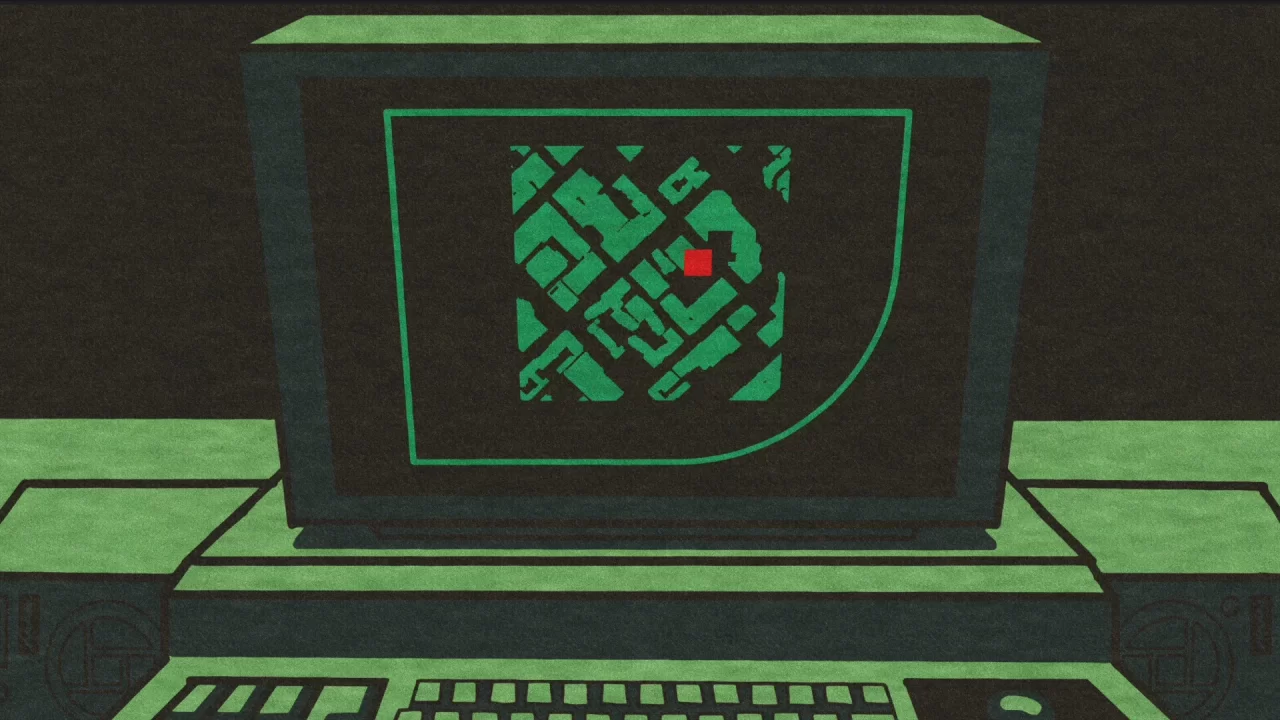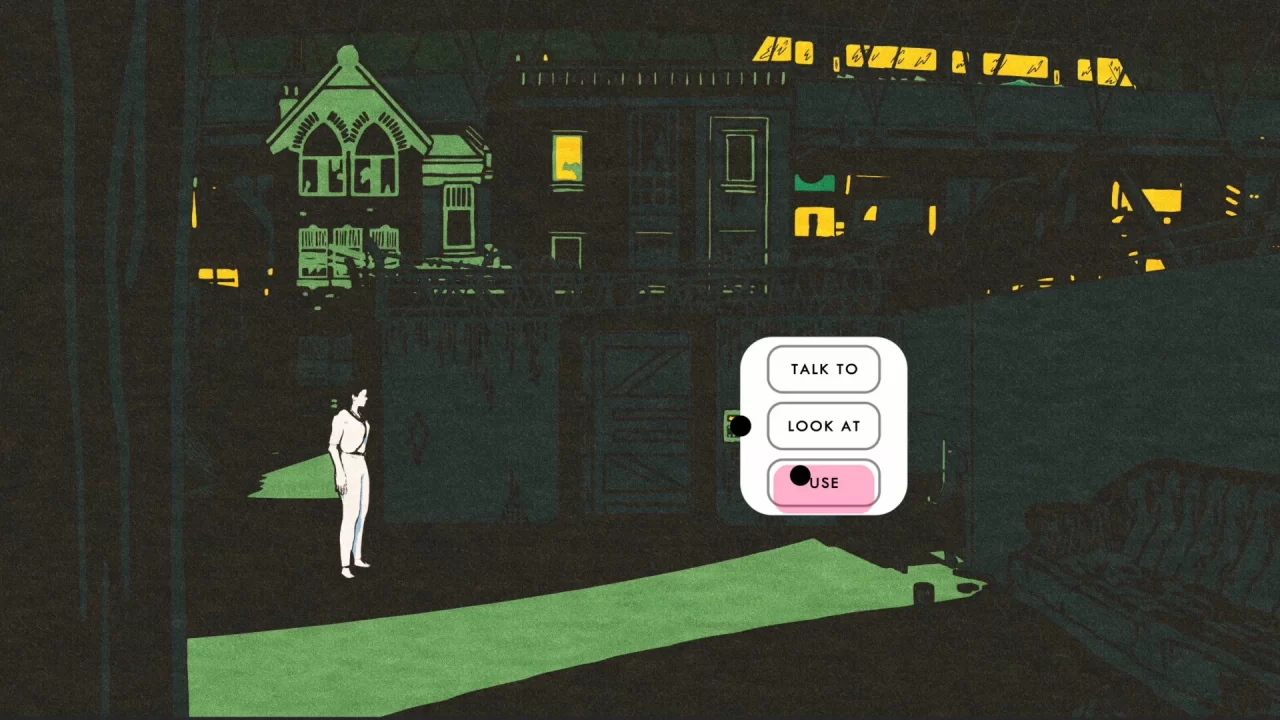Phoenix Springs is about 78% artsy and 22% fartsy. For those looking to do some soul-searching and who don’t mind a dive into the abstract, this is likely the game for you. While certainly not for everyone, it accomplishes what it sets out to do: introduce thought.
A detective noir, Iris searches for her brother Leo Dormer. Is this an acronym or literary reference? I dunno, but maybe. That’s what Phoenix Springs does to a person. Halfway through the game, I was second-guessing everything, wondering why something is named this or why something looks like that. Joyously, I might add, but at a certain point I was begging for something to land on.
Initially, Phoenix Springs feels grounded in a dystopian future that is only hinted at: no garish signs of the oblivion aside from a drunk here and odd technology there. We do gumshoe stuff like knocking on doors, interviewing neighbors, and traveling from place to place. Eventually, I ran into an intense logical oddity that I won’t spoil here, but it made me realize: oh, right, this is clearly arthouse in gaming clothing.
Separating the look and sounds of Phoenix Springs from the story is nigh impossible. Alexandra Crow sublimely performs Iris’ internal monologue—the voice we hear the entire way through. She achieves the tranquil detective noir vibe we usually hear from males. Oddly robotic, Crow’s performance accentuates the eerie visuals that favor near-blacks and solid color choices. An outsider might view this palette choice as pretentious or lazy, but everything always looks fantastic, and I’d venture to say the visuals do about as much storytelling as the writing.
Interacting with the world involves mashing ideas together with the environment, which usually results in some witty insight from Iris if not progressing the story. Iris also has the option of talking to, looking at, or using different parts of the environment, though players will usually be “looking at” objects. Don’t expect a myriad of tangibles in the landscape, though: Phoenix Springs limits, which helps with the puzzling.
Unfortunately, the puzzling can sometimes lead to a guide dang it. Fortunately, the developers were keen to pick up on this and threw a walkthrough link right into the options menu for easy access. Though it’s rare for me to look something up, I did so here. Some of the puzzles here are pretty obtuse, and the options become so vast and varied near the end of the game that I was getting grumpy and losing interest in the story, which should never happen in any adventure game. The solutions were not face-palm moments: some of the expectations thrust onto the player are pretty unreasonable, but, again, there’s a guide there for just such a reason.
I enjoyed hitting dead-ends most of the time because Iris’ thoughts almost always entertained. Also, these dead-ends oftentimes provide context and insight that the core story doesn’t offer, which almost seems intentional. I want to say this is unfortunate, but why? Why do games need clean, carved paths? So what if an adventure game is poetic and meant to stimulate thought rather than serve everything on a platter?
And that’s where I’m stuck with Phoenix Springs. I certainly enjoyed this rabbit hole, but I also have to acknowledge that mystery for mystery’s sake isn’t good, either. With so many face-value storylines out there, Phoenix Springs feels rejuvenating and novel. We’re also not talking a square protagonist meets a triangle antagonist, and, golly gee, that’s a metaphor for late-stage capitalism. This is more tasteful than that.
I’m absolutely certain someone paying attention and doing a couple playthroughs will be able to stitch together the “real story,” but I’m content chewing on this thing in bed, in the shower, and commuting to work. Rather than trying to solve the story, I find it more beneficial to explore the moods and feelings that the imagery and conclusions prompt. Why was that sandbox there, why did Iris say that particular thing, and what do Leo’s goals have to say about the human experience?
Phoenix Springs is not for everyone, and I’d venture to say most people won’t care for it; that’s also the benefit of strong visuals, though. No one’s going to look at screenshots or videos of this game and complain that they got ripped off thinking this was Gears of War. If my rambling and the feeling you get looking at Phoenix Springs doesn’t get you licking your lips, then this might be a pass for you. Others: enjoy food for your artsy fartsy soul.





